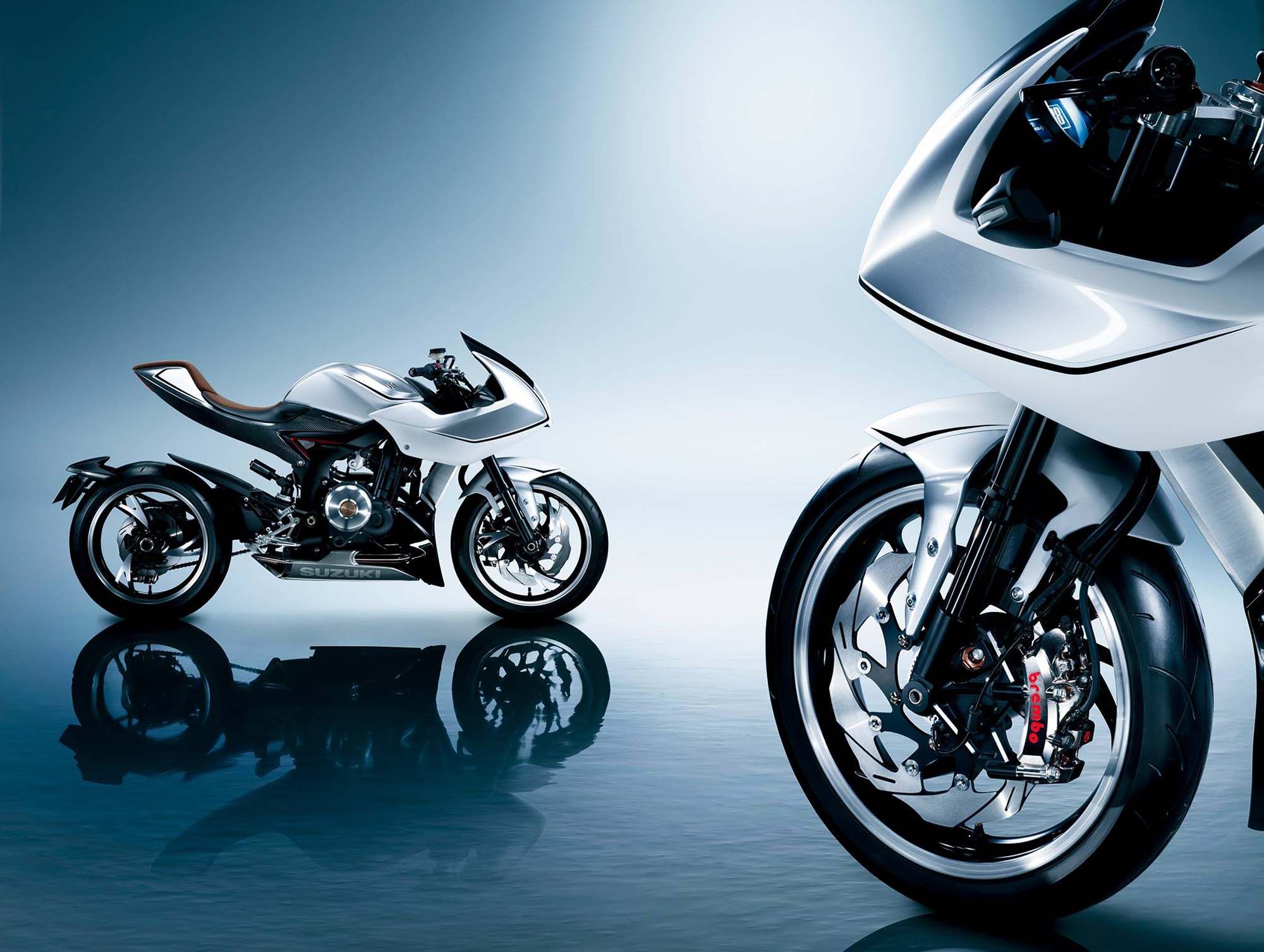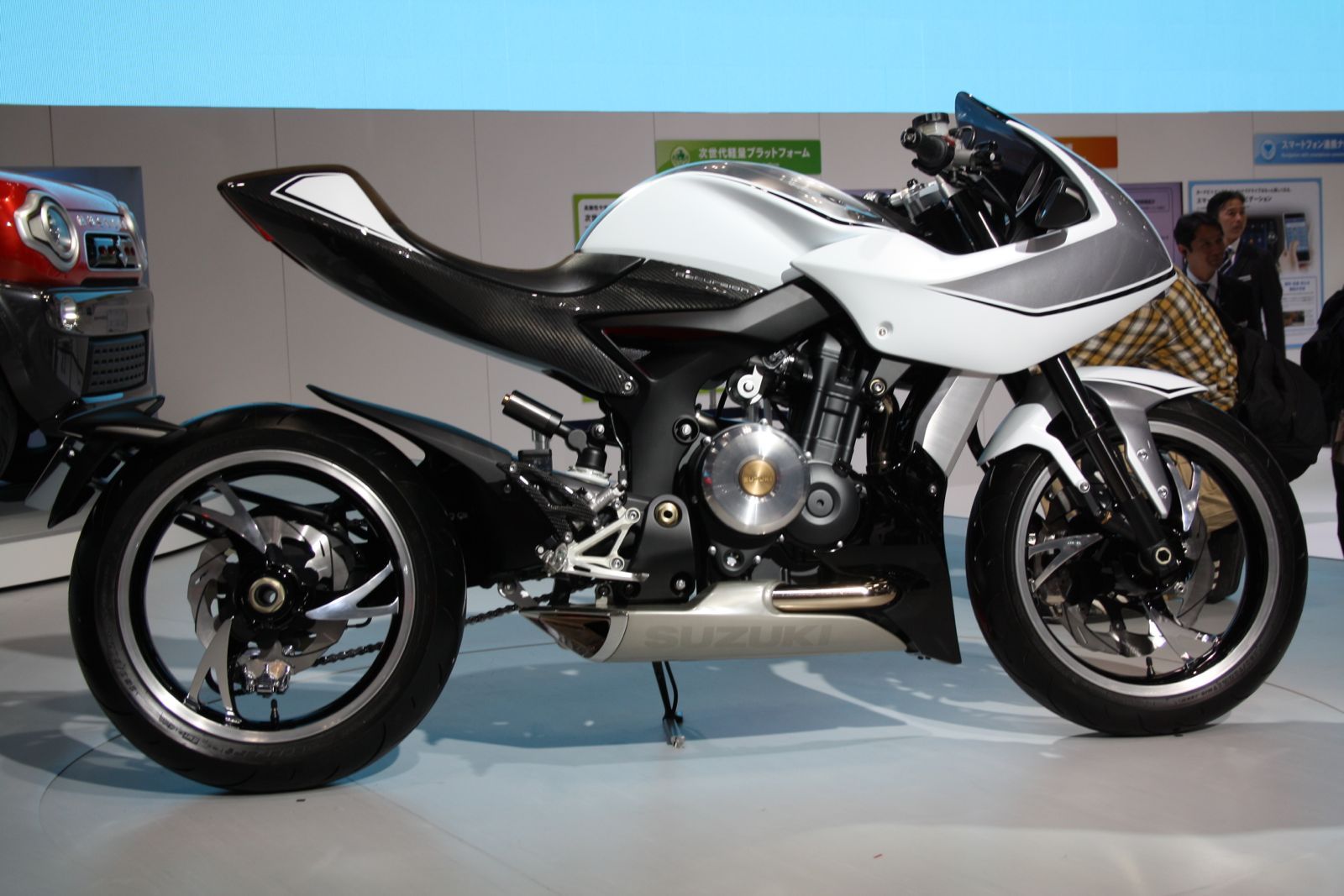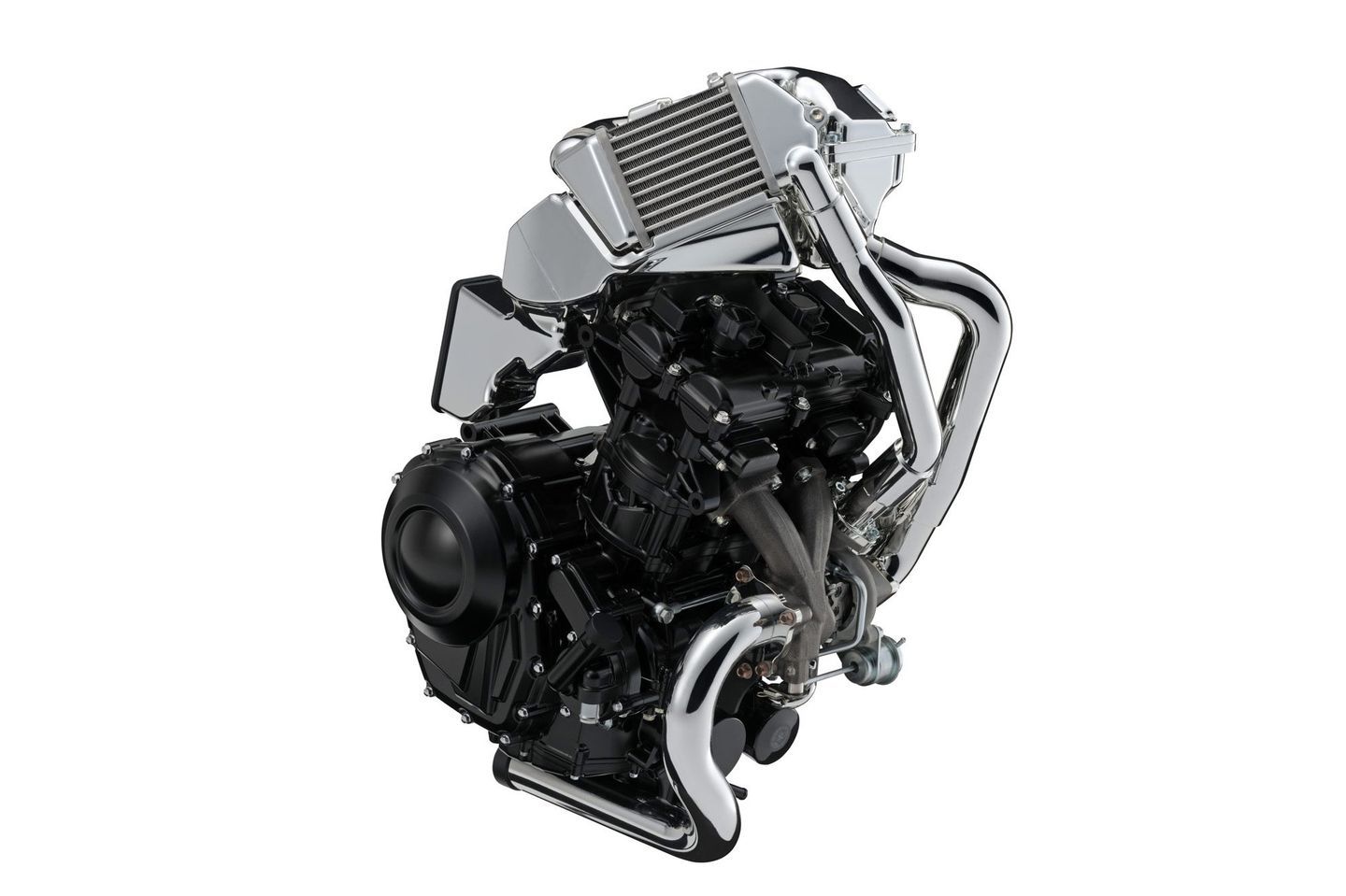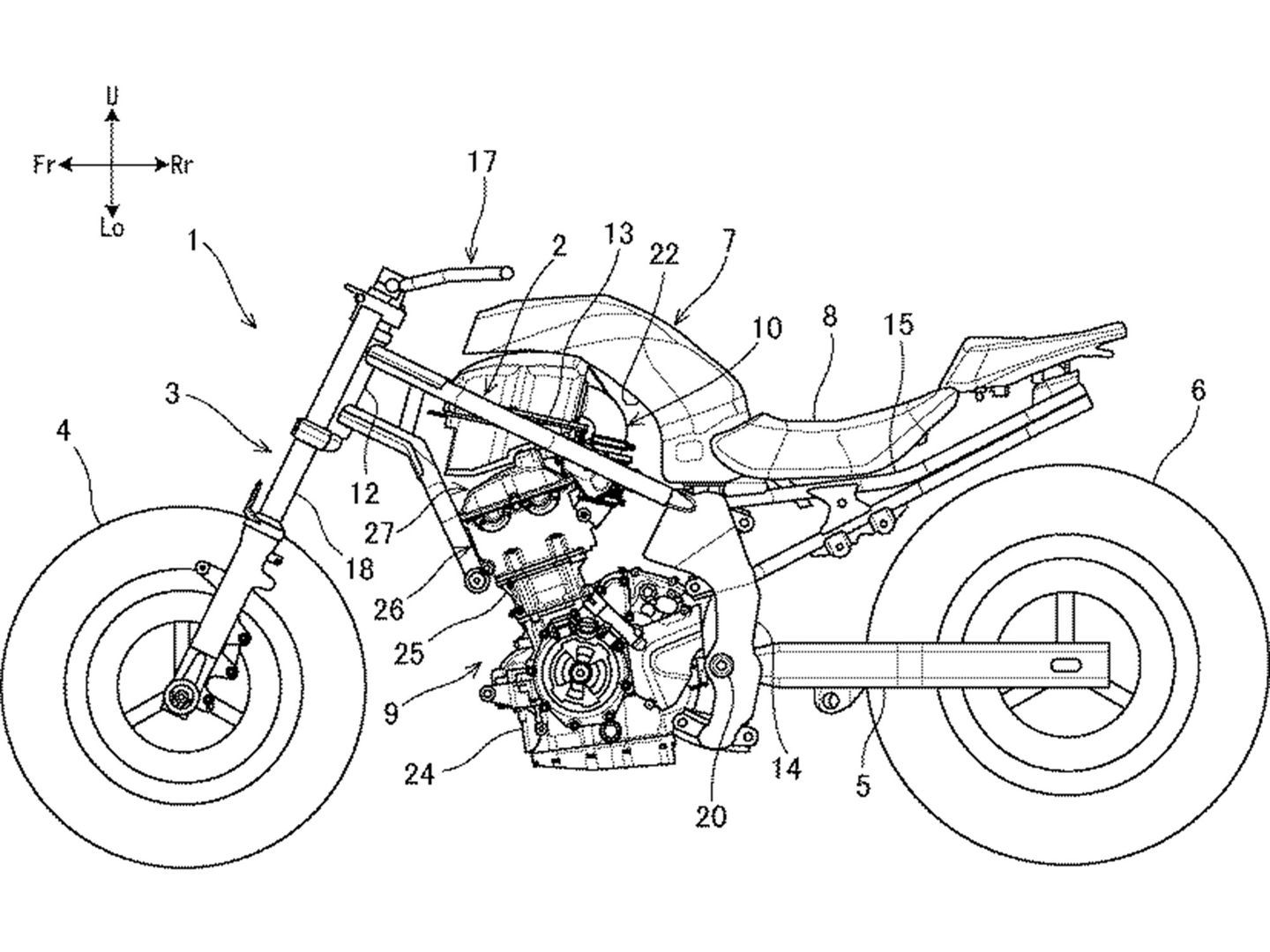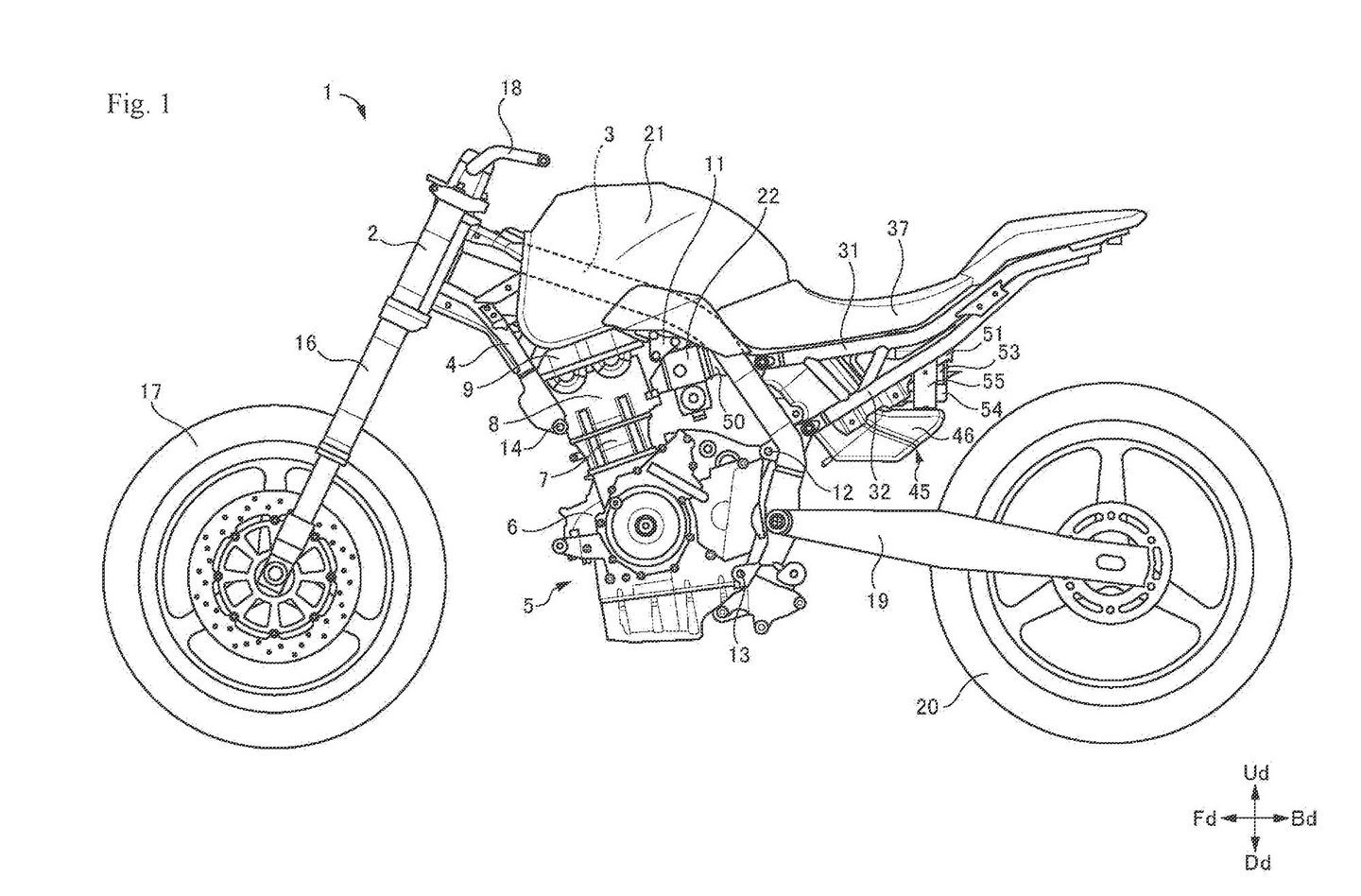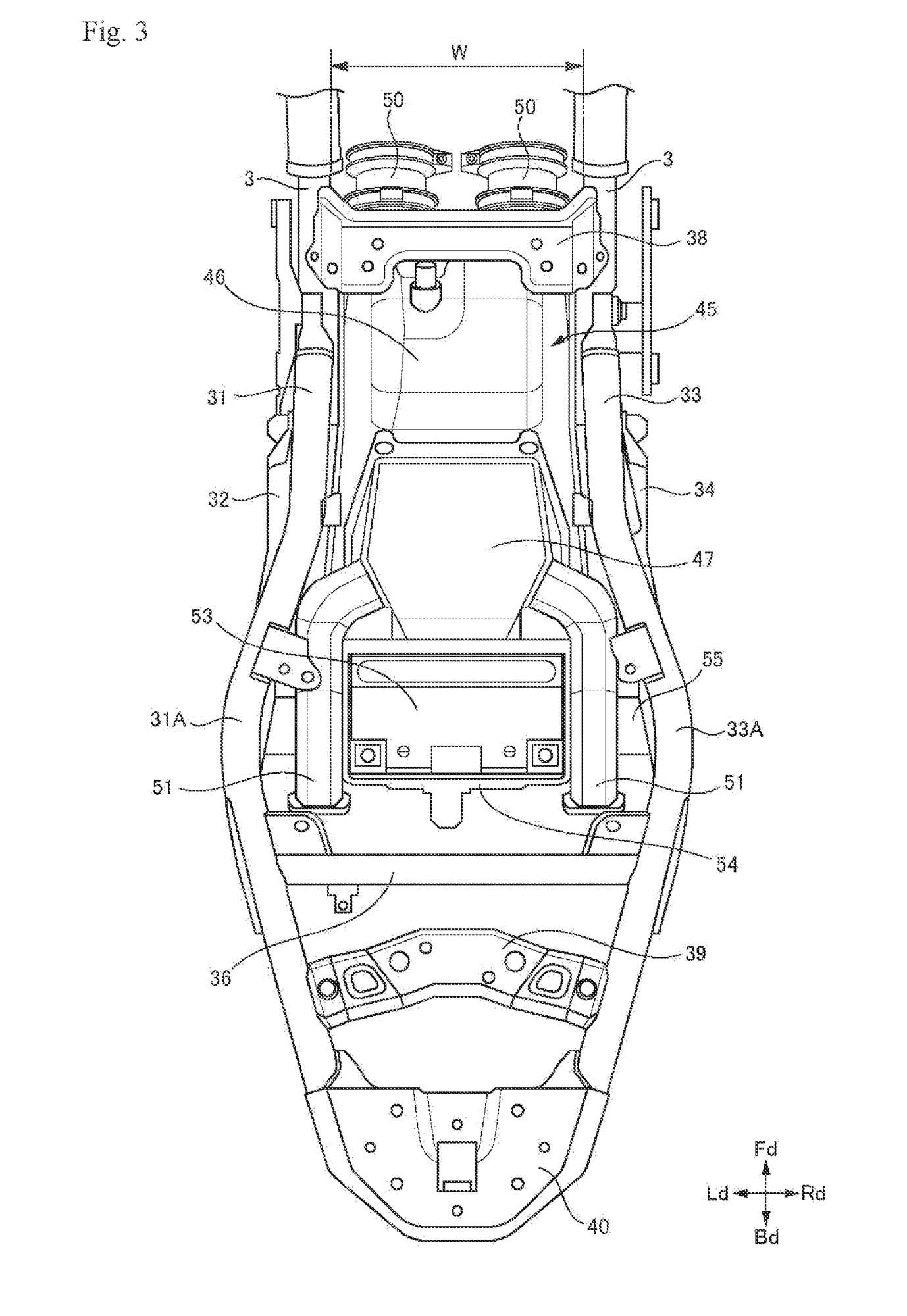Suzuki has been playing around with a parallel twin replacement for its ageing 650cc v-twin for some years now with nothing ever reaching production. New patent applications show that the concept isn't dead yet.
Suzuki Still Playing Around With A Parallel Twin Design
Suzuki's V-Twin 650cc engine has been a mainstay of the company's range for decades and it's easy to see why. For a start, it's a v-twin, always seen as more desirable than a parallel twin which, in the 1990s, had an old-fashioned air about it thanks to the proliferation of such engines in the '40's, '50's and '60's thanks to the British motorcycle industry.
Then, there was the Suzuki V-Twin's reputation for being bullet proof: when the nuclear apocalypse comes, cockroaches will be riding Suzukis through the nuclear wasteland...
Having said all that, a V-Twin isn't the ideal configuration: it's physically larger than a parallel twin, with more components and it's difficult to package neatly as the rear cylinder has issues with cooling, exhaust routing and rear shock absorber positioning.
Recently, the parallel twin has become the engine configuration of choice for so many manufacturers. Triumph started the ball rolling in 2001, when it resurrected its iconic engine and, since then Yamaha, Honda, BMW, KTM, Aprilia and Kawasaki have pinned sales success on the layout: that's more than 30 models over the past decade.
Offsetting the advantages of the parallel-twin engine mentioned above are the disadvantages of an uninspiring soundtrack, flat power delivery and vibration. All these can be countered by utilising an offset crankpin to give the feel, sound and power delivery of a v-twin, while balancer shafts deal with the vibration problem. Triumph, Yamaha, BMW and Aprilia use a 270-degree crank and KTM uses a 285-degree crank.
Back in 2013, Suzuki revealed the Recursion, a 588cc, turbocharged parallel-twin engined model to replace the SV650. This was updated in 2015 to 700cc, still turbocharged.
Since then, rumours have flown in and out of the window about the engine but new patent application drawings show that Suzuki has not abandoned the concept, although the new design has lost the turbo.
The latest drawings show a middleweight roadster in the style of the SV650 fitted with the parallel twin motor. What the drawings also show is an unusual position for the airbox. Previously, this was shown to sit above the engine, protruding into the space occupied by the petrol tank.
The new design places the airbox under the seat which would mean that the air would have to flow forward to the engine and thus not have any ram-air effect. However, the airbox could be much larger in this position, thus negating the loss of ram-air. The position would also make the changing of air filters much easier.
As this has been an ongoing saga for 8 years, who knows when we might see a production version of the engine. Given the success that rival manufacturers have had with parallel twin engines and the proliferation of models that have resulted, from naked roadsters to adventure bikes to faired sports bikes, how long can Suzuki afford to stay out of this particular playground?

